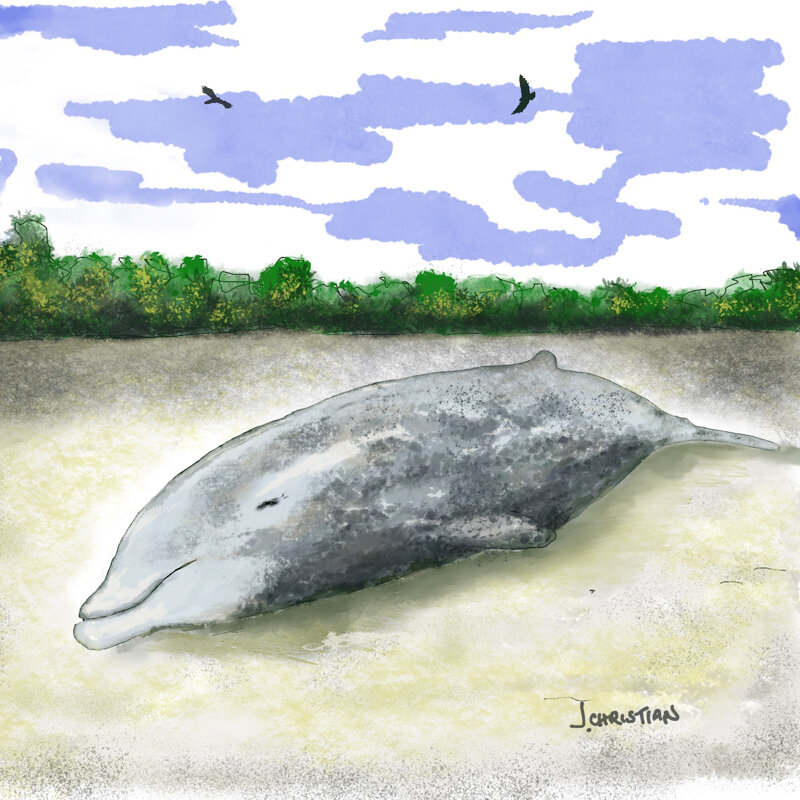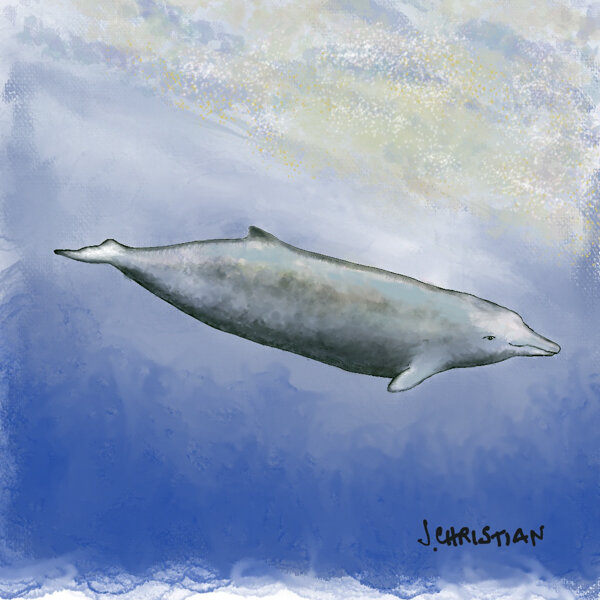How did a Beaked Whale become fossilized west of Lake Turkana?
Beaked whales are squid eaters and dive deeper than any living mammal. Most of the living species are among the most rarely recorded on Earth and in just the past 5 years, 2 new Beaked Whales have been described that were previously unknown to science.
Why then is there a 17 million year old fossilized Beaked whale west of the Rift Valley in one of Kenya’s most extreme desert areas? The fossil skull fragment was found 740km from the Indian Ocean and at an altitude of 620 meters. How on earth did this happen?
In 1964 a visiting Harvard paleontologist named James G Mead discovered a fossil that he believed to be part of an ancient turtle. Only later did he realize that he actually had a skull fragment of a Ziphiid, a family of whales that had never before left their fossil remains anywhere but in the sea. He published his remarkable findings in 1975 while at the University of Chicago but the specimen remained with the expedition leader at Harvard. That professor later passed away and the skull went missing. It went missing for 30 years.
Professor Mead later came back to Kenya and searched for the fossil high and low throughout the Museum of Kenya’s collection. When finally a curator at Harvard identified the skull within the office of Dr. Stephen Jay Gould, the important specimen was able to return to Kenya.
Mystery after mystery regarding this fossil were solved and yet there remained the most striking mystery of all; How did a deep water Whale get it’s self so far inland and die in such a high and dry place?
The answer has as much to say about the Whale’s habitat at the time of its death as the habitat that humans would eventually inherit. 17 Million years ago durring the later Miocene, East Africa was a lush rainforest. Lake Turkana and it’s surrounding deserts were an utterly different place, resembling the central and western African forests today. A rift like valley extended north-west to south-east from the Ethiopian Highlands south to present day Lake Turkana and across and down to Lamu. This depression is referred to the Anza Trough or the Anza Rift and it was created durring the breakup of Panangea when Madagascar parted from Africa, stretching a corner of land that remained. The river Anza ran down the valley and followed much of the course of the lower Ewaso Nyiro river in Kenya and the Juba River in Somalia. The Anza river system would have had enough volume to sustain a large whale and would have run along a drainage at a very slight gradient. While the sea would have been about 10m higher than it is today, the whale would still have had to have traveled between 600 km and 900km up river (Wichura et al, 2014).
It is the change in gradient over all of East Africa that puts the whale fossil in such stark relief today and which also gave some bipedal apes a great opportunity to flourish. The site where the whale died would have been only slightly higher than sea level and yet today it is at 620 meters elevation. Our fossilized Whale is not only the most accurately dated and oldest example of its family but it is also of enormous scientific significance because it provides a far better understanding of a maximum time frame for when the East African Plate began to uplift. (Wichura et al, 2014).
As deep processes within the mantle caused plumes that pushed much of East Africa’s topography higher in elevation there followed a drying and a change from deep forest to a mosaic of grasslands and gallery forests. It was this exact habitat that our own ancestor’s found they could best utilize. As bipedal human ancestors began to venture farther into this new grassland habitat, behavior that reinforced teamwork would have been rewarded with hunting and scavenging success. And so it goes that here we are today a species like none that has ever been before it, capable of remarkable ingenuity and introspection but simultaneously able to disrupt and trash the entire fabric of life itself. We should give pause to our friend the Turkana Beaked Whale and contemplate that while climatic changes may have given rise to our species that our own climate-fouling behavior can even more rapidly, take it away.
A 17-My-old whale constrains onset of uplift and climate change in east Africa
Henry Wichura, Louis L. Jacobs, Andrew Lin, Michael J. Polcyn, Fredrick K. Manthi, Dale A. Winkler, Manfred R. Strecker, and Matthew Clemens






